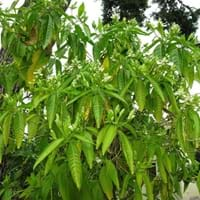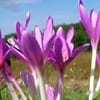Life Span
Perennial
Perennial
Type
Bulb or Corm or Tuber
Herbs, Perennial
Origin
Mediterranean, Turkey
South-Eastern Asia
Types
Not available
Not Available
Habitat
Lawn, meadows, Sunny Edge, Woodland Garden
Semi desert, Wet forest
USDA Hardiness Zone
6-9
9-11
Sunset Zone
21,22
Not Available
Habit
Clump-Forming
Clump-Forming
Minimum Width
Not Available
Flower Color
Fuchsia, Rose
White
Flower Color Modifier
Bicolor
Bicolor
Fruit Color
Not Available
Not Available
Leaf Color in Spring
Green
Dark Green
Leaf Color in Summer
Light Green
Green, Light Green
Leaf Color in Fall
Several shades of Green
Dark Green
Leaf Color in Winter
Light Green
Dark Green
Leaf Shape
Long Broad
Elliptic
Plant Season
Spring, Fall
Spring, Summer, Fall, Winter
Sunlight
Full Sun, Partial Sun
Full Sun, Partial Sun, Partial shade
Growth Rate
Medium
Very Fast
Type of Soil
Loam
Clay, Loam, Sand
The pH of Soil
Acidic, Neutral
Acidic, Neutral, Alkaline
Soil Drainage
Well drained
Average
Bloom Time
Late Summer, Early Fall
Indeterminate
Tolerances
Drought
Wet Site
Where to Plant?
Container, Ground, Pot
Container, Ground
How to Plant?
Corms or bulbs, Seedlings
Stem Cutting
Plant Maintenance
Low
Medium
Watering Requirements
Do Not over Water, Keep the ground moist but not water-logged
Average Water Needs, Needs good drainage
In Summer
Lots of watering
Lots of watering
In Spring
Moderate
Moderate
In Winter
Average Water
Average Water
Soil pH
Acidic, Neutral
Acidic, Neutral, Alkaline
Soil Type
Loam
Clay, Loam, Sand
Soil Drainage Capacity
Well drained
Average
Sun Exposure
Full Sun, Partial Sun
Full Sun, Partial Sun, Partial shade
Pruning
Cut or pinch the stems, Remove damaged leaves, Remove dead flowers, Remove dead leaves
Cut away fading foliage, Cut upper 1/3 section when young to enhancegrowth, Remove damaged leaves, Remove dead branches, Remove dead leaves
Fertilizers
All-Purpose Liquid Fertilizer, fertilize in summer
All-Purpose Liquid Fertilizer, Don't use high pH fertilizers
Pests and Diseases
Slugs
Aphids, Downy mildew, Dry root rot, Rust, Spider mites
Plant Tolerance
Drought
Heat Tolerance, Humidity
Flower Petal Number
Single
Single
Foliage Texture
Coarse
Medium
Foliage Sheen
Not Available
Matte
Attracts
Bees, Butterflies
Aphids, Bees, Butterflies, Snails
Allergy
poisonous if ingested, Toxic if not prepared properly
Dizziness, Mouth itching, Vomiting
Aesthetic Uses
Beautification, Cottage Garden, Showy Purposes
Cottage Garden, Showy Purposes
Beauty Benefits
Removes pimples
Good Cleanser, Good for the Scalp
Environmental Uses
Air purification
Air purification, Insect Repellent
Medicinal Uses
Arthritis, Gout, Itching
Antipyretic, Bronchitis, Cough, Digestive disorders, Ear infections, Expectorant, Laxative, Migraines, Piles, Rheumatism, Throat infection, Treating fever
Part of Plant Used
Bulbs, Flowers, Seeds
Bark, Leaf Stalks, Leaves
Other Uses
Used as Ornamental plant, Used for its medicinal properties
Biomass for fuel, Can be made into a herbal tea, Culinary use, Oil is used for aromatherapy, Used as a laxative
Used As Indoor Plant
No
No
Used As Outdoor Plant
Yes
Yes
Garden Design
Alpine, Container, Mixed Border, Rock Garden / Wall
Container, Hedges, Mixed Border, Screening / Wind Break, Tropical
Botanical Name
Colchicum autumnale
Justicia adhatoda
Common Name
Autumn Crocus, meadow saffron, naked lady
Malabar nut, Adulsa, Adhatoda, Vasaka
In Hindi
शरद ऋतु का पौधा
अडुळसा, अडुसा
In German
Herbstzeitlose
Indisches Lungenkraut
In French
colchique d'automne
Justicia adhatoda
In Spanish
cólquico
Justicia adhatoda
In Greek
φθινόπωρο κρόκος
Justicia adhatoda
In Portuguese
aftomn gema
Justicia adhatoda
In Polish
aftomn żółtka
Justicia adhatoda
In Latin
aftomn vitellus
Justicia adhatoda
Phylum
Magnoliophyta
Magnoliophyta
Class
Liliopsida
Magnoliopsida
Order
Liliales
Scrophulariales
Family
Liliaceae
Acanthaceae
Clade
Angiosperms, Monocots
Angiosperms, Monocots
Tribe
Colchiceae
Justicieae
Subfamily
Not Available
Acanthoideae
Importance of Autumn Crocus and Malabar nut
Want to have the most appropriate plant for your garden? You might want to know the importance of Autumn Crocus and Malabar nut. Basically, these two plants vary in many aspects. Compare Autumn Crocus and Malabar nut as they differ in many characteristics such as their life, care, benefits, facts, etc. Every gardener must at least have the slightest clue about the plants he wants to plant in his garden. Compare their benefits, which differ in many ways like facts and uses. The medicinal use of Autumn Crocus is Arthritis, Gout and Itching whereas of Malabar nut is Antipyretic, Bronchitis, Cough, Digestive disorders, Ear infections, Expectorant, Laxative, Migraines, Piles, Rheumatism, Throat infection and Treating fever. Autumn Crocus has beauty benefits as follows: Removes pimples while Malabar nut has beauty benefits as follows: Removes pimples.
Compare Facts of Autumn Crocus vs Malabar nut
How to choose the best garden plant for your garden depending upon its facts? Here garden plant comparison will help you to solve this query. Compare the facts of Autumn Crocus vs Malabar nut and know which one to choose. As garden plants have benefits and other uses, allergy is also a major drawback of plants for some people. Allergic reactions of Autumn Crocus are poisonous if ingested and Toxic if not prepared properly whereas of Malabar nut have Dizziness, Mouth itching and Vomiting respectively. Having a fruit bearing plant in your garden can be a plus point of your garden. Autumn Crocus has no showy fruits and Malabar nut has no showy fruits. Also Autumn Crocus is not flowering and Malabar nut is not flowering . You can compare Autumn Crocus and Malabar nut facts and facts of other plants too.





